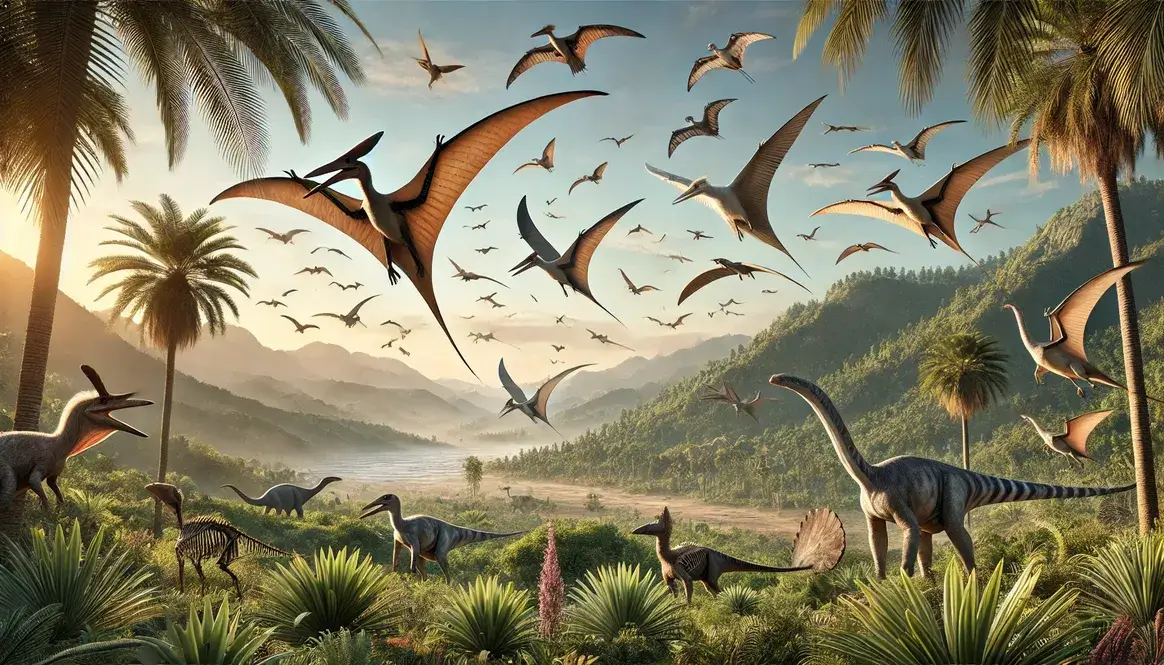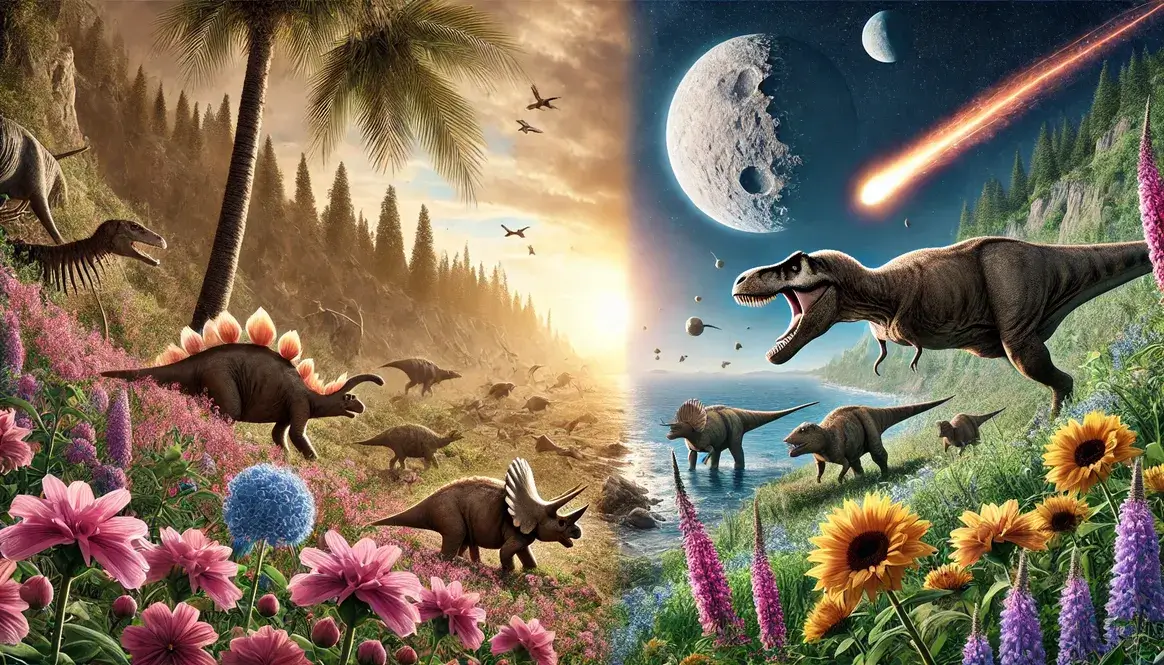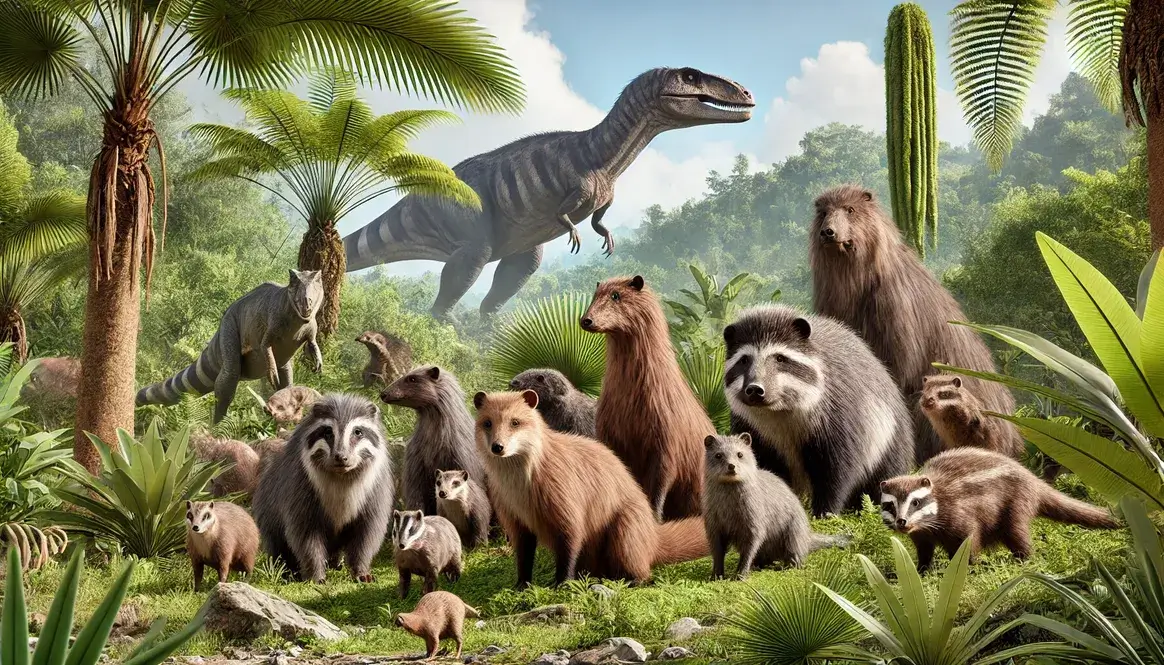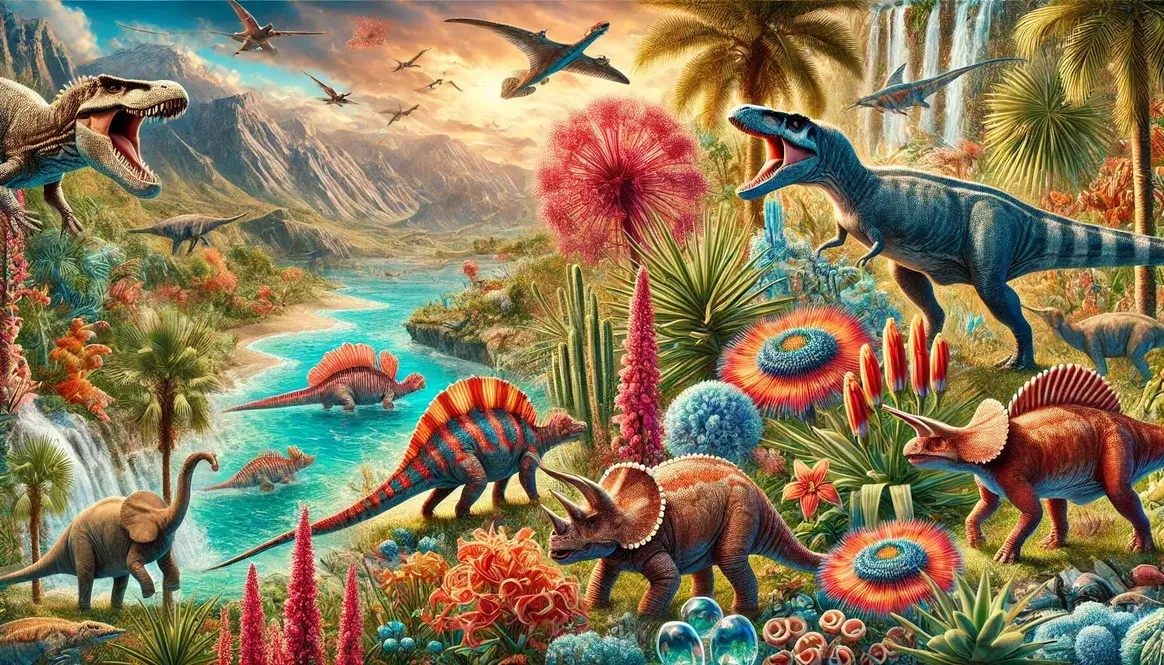The Cretaceous period marked a time of remarkable change in Earth’s aerial ecosystems. As we journey back to this fascinating era, we’ll explore how the skies transformed and the incredible creatures that called them home.
As the Jurassic period faded into history, the Cretaceous dawned with skies already teeming with flying creatures. This era, spanning from 145 to 66 million years ago, saw an explosion of aerial diversity that would shape the course of evolution.
The early Cretaceous skies were a mix of familiar sights from the Jurassic and new innovations. Pterosaurs, the flying reptiles that had dominated the Jurassic skies, continued their reign. But they weren’t alone. The first true birds, descendants of small, feathered dinosaurs, were also taking to the air in growing numbers.
Flying dinosaurs Cretaceous: A Diverse Aerial Ecosystem
The Cretaceous period was a golden age for flying creatures, with a diverse array of animals conquering the skies. From the soaring pterosaurs to the first true birds, this era saw an unprecedented variety of aerial adaptations.
The Cretaceous period was home to an impressive array of flying creatures. But here’s where things get a bit tricky: not all flying creatures in the Cretaceous were dinosaurs, and not all dinosaurs could fly!
Let’s break it down:
- True flying dinosaurs: These were the birds. Yes, birds are dinosaurs! They evolved from small, feathered theropod dinosaurs and took to the skies.
- Pterosaurs: These flying reptiles weren’t dinosaurs at all. They were a separate group of reptiles that evolved the ability to fly independently.
Both groups shared the Cretaceous skies, each with their own unique adaptations and lifestyles. It’s a common misconception that pterosaurs were dinosaurs, but they were distinct groups that happened to live at the same time.
Pterosaurs: Masters of the Cretaceous Skies
Pterosaurs, the first vertebrates to achieve powered flight, reached their peak diversity and size during the Cretaceous period. These remarkable creatures dominated the skies for over 160 million years, adapting to a wide range of ecological niches.
Early Cretaceous Pterosaur Diversity
As the Cretaceous period began, pterosaurs were already well-established in the skies. The dominant group at this time was the pterodactyloids, which had short tails and long, narrow skulls.
Some notable early Cretaceous pterosaurs included:
| Pterosaur | Size | Notable Features |
|---|---|---|
| Ornithocheirus | Wingspan up to 6 meters | Large, forward-pointing teeth |
| Pteranodon | Wingspan up to 7 meters | Toothless beak, large head crest |
| Dsungaripterus | Wingspan around 3-4 meters | Upturned beak tip, ideal for prying shellfish |
These pterosaurs had several key adaptations for flight:
- Hollow bones: Like birds, pterosaurs had hollow bones that were both strong and lightweight.
- Wing membranes: Their wings were made of tough, leathery skin stretched between elongated finger bones.
- Powerful muscles: Strong chest muscles attached to a large breastbone powered their flight.
Rise of the Giant Pterosaurs
As the Cretaceous progressed, pterosaurs didn’t just diversify – they got bigger. Much bigger. The late Cretaceous saw the emergence of truly gigantic pterosaurs, particularly in the group known as azhdarchids.
Azhdarchids, named after the Persian word for dragon, were some of the largest animals ever to fly. The most famous of these was Quetzalcoatlus, with a wingspan that may have reached 10-11 meters!
Other notable late Cretaceous pterosaurs included:
- Hatzegopteryx: A stocky azhdarchid with a shorter neck, possibly adapted for hunting large prey.
- Pterodaustro: Known for its unusual bristle-like teeth, used for filter feeding.
- Nyctosaurus: Famous for its enormous, antler-like head crest.
These giant pterosaurs pushed the limits of powered flight, with adaptations like:
- Incredibly thin-walled bones for reduced weight
- Highly efficient respiratory systems
- Possible quadrupedal launch techniques to get their massive bodies airborne
The diversity and success of pterosaurs in the Cretaceous skies is a testament to the adaptability and evolutionary potential of these fascinating creatures.
Late Cretaceous: The Golden Age of Flying Creatures
The Late Cretaceous period, spanning from about 100 to 66 million years ago, was a time of unparalleled aerial diversity. The skies were filled with an astonishing variety of flying creatures, from enormous pterosaurs to a multitude of bird species.
Peak Pterosaur Diversity and Size
During this time, pterosaurs reached their zenith in both size and diversity. The largest known flying creatures of all time took to the skies during this period.
Giants of the Skies:
- Quetzalcoatlus: With a wingspan of up to 10-11 meters, this azhdarchid pterosaur was as tall as a giraffe when standing on the ground.
- Hatzegopteryx: Nearly as large as Quetzalcoatlus, but with a more robust build, possibly allowing it to prey on small dinosaurs.
- Arambourgiana: Another massive azhdarchid, with size estimates similar to Quetzalcoatlus.
These giants coexisted with a variety of smaller, specialized pterosaur species. Some late Cretaceous pterosaurs developed remarkable adaptations:
- Nyctosaurus: Evolved an enormous antler-like crest, possibly for display or thermoregulation.
- Pterodaustro: Possessed a beak filled with hundreds of bristle-like teeth, perfect for filter-feeding.
- Tapejara: Had a large, elaborate head crest that may have served as a rudder during flight.
The diversity of pterosaurs in the Late Cretaceous demonstrates their ability to adapt to various ecological niches, from coastal fish-eaters to inland predators and filter-feeders.
Explosion of Bird Diversity
While pterosaurs were reaching their peak, birds were undergoing an explosion of diversity. This period saw the emergence of many new bird groups, including the ancestors of modern birds.
The Late Cretaceous witnessed an adaptive radiation of birds into various ecological niches:
| Ecological Niche | Example Bird | Key Adaptation |
|---|---|---|
| Diving seabirds | Hesperornis | Powerful legs for underwater propulsion |
| Coastal waders | Ichthyornis | Long legs and bills for foraging |
| Forest dwellers | Enantiornithines | Varied beak shapes for different food sources |
| Early songbirds | Vegavis | Syrinx for vocalizations |
This diversification was likely driven by several factors, including:
- The spread of flowering plants, providing new food sources and habitats
- Ongoing breakup of continents, creating isolated populations that could evolve independently
- Competition with pterosaurs, pushing birds to adapt to new niches
By the end of the Cretaceous, birds had evolved many of the features we see in modern birds, setting the stage for their post-Cretaceous success.
The Cretaceous-Paleogene Extinction: End of an Era
The reign of the pterosaurs and the golden age of Cretaceous birds came to an abrupt end 66 million years ago with the Cretaceous-Paleogene (K-Pg) extinction event. This global catastrophe, likely caused by an asteroid impact, had a profound effect on flying creatures.
The impact on flying creatures was severe:
- Pterosaurs: All pterosaur species went extinct. Their large size and specialized adaptations may have made them particularly vulnerable to the rapid environmental changes.
- Birds: Many bird groups, including all enantiornithines, became extinct. However, some bird lineages survived, including the ancestors of modern birds.
The survivorship of certain bird groups may be attributed to factors such as:
- Smaller body sizes, requiring less food
- More generalized diets, allowing them to adapt to changed food sources
- Possible ground-dwelling habits, protecting them from the initial impact effects
The extinction of pterosaurs and many bird groups left ecological niches open, setting the stage for the rapid diversification of surviving bird lineages in the early Cenozoic era.
Legacy of Cretaceous Flyers: Shaping Modern Skies
The flying creatures of the Cretaceous left a lasting impact on our modern world. While pterosaurs are gone, their reign in the Mesozoic skies pushed the boundaries of vertebrate flight, demonstrating the incredible adaptability of life.
The survivors of the Cretaceous extinction, the ancestors of modern birds, carried forward evolutionary innovations from the Cretaceous:
- Efficient respiratory systems
- Lightweight, hollow bones
- Diverse feather types for flight, insulation, and display
These adaptations, honed during the competitive crucible of the Cretaceous skies, allowed birds to rapidly diversify after the extinction event. Today’s 10,000+ species of birds, from tiny hummingbirds to soaring albatrosses, all owe their success to their Cretaceous ancestors.
The Cretaceous period was a critical time in the evolution of flight. The dramatic changes in climate and geography during this era drove the development of diverse flying strategies and adaptations. These innovations continue to shape our understanding of biomechanics and inspire human technologies, from aircraft design to materials science.









